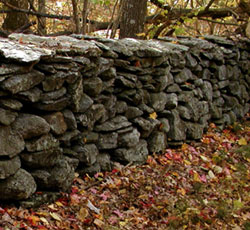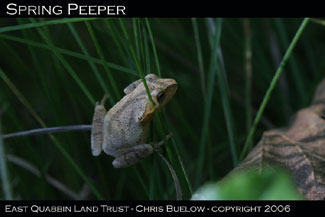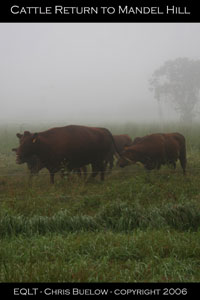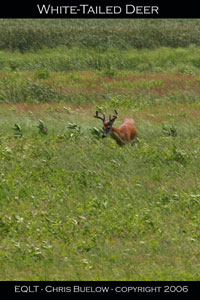|
|
|
Gifts of Land
A donation of your land to a private, non-profit conservation organization, such as the East Quabbin Land Trust, is a good conservation option if you want to protect your land permanently and make it available for other to enjoy, and if you want to be free of the burdens of ownership and management. Donating land for conservation brings with it certain tax benefits. You are no longer responsible for paying property taxes on the land. Also, the value of the property is removed from your estate, potentially reducing the estate tax burden for your heirs. Capital gains taxes that would likely be due if the land was sold are avoided. Finally, the value of the land may be claimed as a charitable contribution on your federal income tax return.
Since 1994 many landowners have entrusted their properties to the East Quabbin Land Trust’s stewardship. Following are several stories of these landowners and their lands.
|
| 85 acres on Simpson Road, Hardwick
In 2006, an anonymous donor made an initial gift of 23 acres. The land was originally purchased with the thought of building a home on the secluded location. Over time, the family situation changed leading to the donation. The donor wanted to ensure that the property could be conserved and take advantage of the income tax deduction. Also in 2006, Paul Gabens inherited a 58-acre property from his cousin. Mr. Gabens visited the land many summers during his youth developing a strong bond to the open landscape. In addition, Mr. Gabens agreed with and knew that his cousin would prefer the land remain undeveloped into the future. First, Mr. Gabens donated a conservation restriction to EQLT on the property and in the following year donated the land. This sequence of events provided him the maximum tax benefit and forever ensures the land will remain conserved.
|
 |
|
These two neighboring properties donated to EQLT are managed under one stewardship plan. The land was once cleared for pasture and is now largely forested. In the northern end is an imposing walled structure, the history of its design and use are currently being researched. Views of Hardwick Common to the west and Mandell Hill to the southeast are possible from atop a large glacial erratic upon the upper ridgeline of the property. Beavers are expanding a wetland complex along the eastern boundary. Invasive plants abound throughout the property and will be controlled when feasible. The ownership and conservation of these two parcels fits EQLT's mission by expanding the corridor of conservation lands in Hardwick and protecting diverse habitats and historic landscapes.
|
| 125 acres on Brook and Ridge Roads, Hardwick |
 |
Jerry and Liz Reilly established the Moose Brook Preserve with the donation of 100 acres along Brook and Ridge Roads in 1999. The Reilly’s purchased the property to protect the undeveloped character of the Moose Brook valley. Brook Road is a gravel road closed during the winter and this portion of Ridge Road is abandoned. Subsequently, the Town of Hardwick took a neighboring 25-acres because of property tax default and turned over the land to EQLT for future stewardship. |
|
The Moose Brook Preserve lies at the heart of the Moose Brook Valley. The Moose Brook Preserve Trails are two trails that loop through the rich forest and steep hillsides on the western ridges of the Moose Brook Valley. The trails explore natural features including a vernal pool, an intermittent stream and a steep forested boulder field. Old logging roads attest to past woodcutting. Stonewalls are not prevalent, indicating that the land was probably not heavily grazed. The Moose Brook Preserve holds a wide suite of interior forest breeding birds and offers terrific bird watching opportunities.
|
| 200 acres on Barre and Ridge Roads, Hardwick |
 |
| In the 1970’s Henry A. and Elisabeth (Betty) Mixter Morss built a house on the property at 120 Ridge Road, which currently serves as the headquarters of the East Quabbin Land Trust. Conservation of the agricultural landscape meant a lot to Mrs. Morss because of her youth spent in Hardwick and their eventually retiring to the land. Through her will, Mrs. Morss ensured that her home and Mandell Hill would remain permanently conserved in perpetuity. In 2003, Mrs. Morss’ executors worked with the East Quabbin Land Trust and the Trustees of Reservations to place a conservation restriction on the property and subsequently transferred the house and land to the East Quabbin Land Trust. In addition, a $500,000 endowment was given to ensure that the building and property could be maintained into the future. |
| Mandell Hill is a 200-acre farm overlooking the Ware River valley on Ruggles Ridge to the east of Hardwick center. Historically, the fields were pasture or produced hay and corn. The woods are largely mixed hardwoods of modest age, 80 to 120 years old, and occupy the steepest and rockiest portions of the property. An abandoned apple orchard on Barre Road, with approximately 40 trees, provides food and cover for wildlife. Other important features on the property are various farm-oriented historical sites, viewscapes, and the Morss house at 120 Ridge Road. The Mandell Hill Trail is a great introduction to the properties of EQLT |
| 136 acres on Patrill Hollow and Gilbertville Roads, Hardwick |
 |
The land now known as the Patrill Hollow Preserve was once part of the extensive Mixter family land holdings in Hardwick. In the late 1980’s Hans Thoma bought the land to prevent it from being developed. The Thoma’s live across the street and cherished the open hay field and woods along Gilbertville Road. Mr. Thoma donated the land to EQLT to ensure that the land would remain undeveloped and the timing of the donation allowed Mr. Thoma to take full advantage of the federal income tax deduction for the gift.
Patrill Hollow Preserve includes a small, 8-acre hay field along Gilbertville Road in an otherwise wooded property. There are large areas dominated by white pines and other areas of mixed oaks. A wide forested wetland divides the property north to south and two hilltops (greater than 1,000 feet in elevation) are on either side of the wetland valley. There are several large trees, remnants of shade trees in former pastures, found particularly on the eastern portion. A vernal pool, old foundation and well are special features near the northern boundary. A trail loop is currently being constructed with access from Patrill Hollow Road.
|
|

